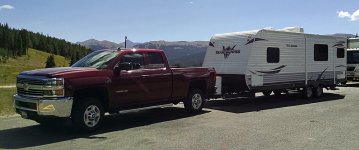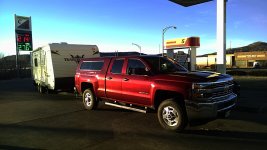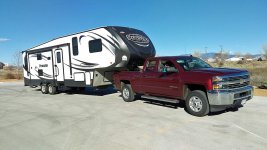There are tribes centered around this issue. The day of the dually is rapidly disappearing because of frame and tire advancements. But folks are also buying bigger and bigger rigs, and toy haulers. My SRW has a payload rating of 4300 lbs, which is more than enough to tow the BC3650RL. The towing capacity is 17,000 lbs. I do not know what else one would want in a tow vehicle.
A dually is not going to keep your rig from turning over, once that fiver starts over, it matters little what you are towing with, If you see my SRW rig pull off the road because of wind, you should consider doing the same with your DRW.
There is no braking advantage between a DRW and SRW because 75% of breaking takes place on the front axle, and a SRW has more rubber in front than a DRW truck, the additional rubber on the rear of the dually is insignificant when actually measured, as is the wider wheel spacing. Measure it, it's not that much.
DRW trucks have notoriously bad traction in dirt, rain, and ice. 4X4 is a desirable option for many who are DRW drivers. DRW truck can get stuck and never sink into the mud, they just can't move.
Then you must pay for the energy to turn all that mass involved with 6 wheels and tires turning, that translates directly to fuel consumption. So you will want to limit the use of the DRW to towing your rig.
Then there are licensing issues (in Texas anyway). Pretty much in this state DRW + 15500 GVW rig = Class A license.
However most duallys offer the lower axle ratios (RAM does not in the SRW), which is a plus for the larger heavier rigs. IF you are needing a dually because of payload and towing capability, then you probably need to consider the axle ratio as well.
I recommend doing the math and buying no more than what you need or anticipate needing. Of course if you were anticipating a 2 year tour of the USA in a fairly good sized fiver (as opposed to 3 to 5K per season), then the DRW consideration may weigh into the selection process.





